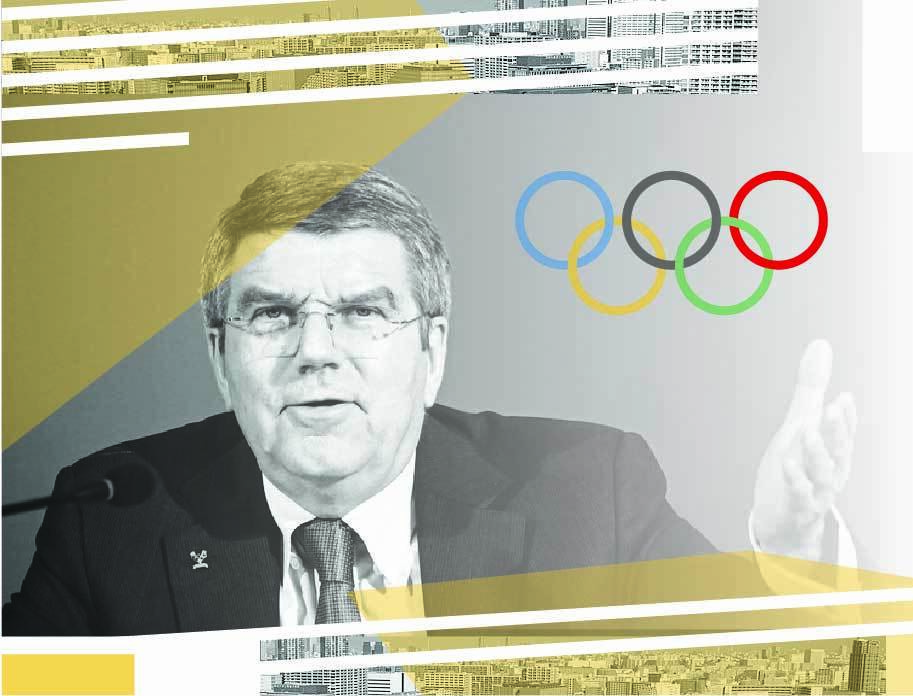
Jörg-Uwe Nieland
Senior researcher in Communication Science at the Zeppelin University Friedrichshafen and associated at the Institute for European Sport Development and Leisure Research at the German Sport University Cologne.
Since 2014 co-leader and head of the group “Media Sports and Sports Communication”.

Section 2: Media Coverage & Representation
- Twitter conversations on Indian female athletes in Tokyo
- ”Unity in Diversity” – The varying media representations of female Olympic athletes
- The Olympic Channel: insights on its distinctive role in Tokyo 2020
- How do we truly interpret the Tokyo Olympic ratings?
- Reshaping the Olympics media coverage through innovation
- An Olympic utopia: separating politics and sport. Primary notes after analyzing the opening ceremony media coverage of mainstream Spanish sport newspapers
- What place is this? Tokyo’s made-for-television Olympics
- The paradox of the parade of nations: A South Korean network’s coverage of the opening ceremony at the 2020 Tokyo Olympics
- Tokyo 2021: the TV Olympics
- Why we need to see the “ugly” in women’s sports
- “The gender-equal games” vs “The IOC is failing black women”: narratives of progress and failure of the 2020 Tokyo Olympics
- Ghana: Poor local organizing, and absence of football team dampens interest
- Megan Rapinoe: The scary Bear for many Americans?
- ‘A Games like no other’: The demise of FTA live Olympic sport?
- Temporality of emotionalizing athletes
- Fandom and digital media during the Tokyo 2020 Olympic Games: A Brazilian perspective using @TimeBrasil Twitter data
- Media wins medal for coverage of athletes as people, instead of entertainers
- Media frames and the ‘humanity’ of athletes
- Reporting at a distance. Stricter working conditions and demands on sports journalists during the Olympics
- New Olympic sports: the mediatization of action sports through the Olympic Games 2020 Tokyo
- Simone Biles, journalistic authority, and the ideology of sports news
- Representations of gender in the live broadcast of the Tokyo Olympics
- Americans on ideological left more engaged in Summer Olympics
- Nigeria: Olympic Games a mystery for rural dwellers in Lagos
- National hierarchy in Israeli Olympic discourses
- Equestrian sports in media through hundred Olympic years. A roundtrip from focus to shade and back again?
- Reshaping the superhuman to the super ordinary: The Tokyo Paralympics in Australian broadcasting media
- Is the Paralympic Games a second-class event?
- The fleeting nature of an Olympic meme: Virality and IOC TV rights
- Tokyo 2020: A look through the screen of Brazilian television
- Is the Paralympic Games a second-class event?
- How digital content creators are shaping meanings about world class para-athletes
- How digital content creators are shaping meanings about world class para-athletes
- The male and female sports journalists divide on the Twittersphere during Tokyo 2020
- Super heroes among us: A brief discussion of using the superhero genre to promote Paralympic Games and athletes
- “Everything seemed very complicated”: Journalist experiences of covering the Tokyo 2020 Paralympic Games
- Representing high performance: Brazilian sports journalists and mass communication professionals discuss their philosophies on producing progressive Paralympic coverage
- Representations of gender in media coverage of the Tokyo 2020 Paralympic Games
There is a long tradition of research in sports communication studies on the representation of women in sports, women’s empowerment through sports, as well as the issue of sexualization and sexism. Representation of women in sports is lacking compared to men, women generally receive significantly less media attention, less pay, and hardly any positions in federations and clubs.
Three incidents made sexualization and de-sexualization an issue immediately before the Tokyo Games. The German gymnasts did not compete in the classic skimpy gymnastics’ suits at the 2021 European Gymnastics Championships, but in full body suits. This action received a broad, international press reaction: From the BBC to the Times of India, the “protest against sexism” was praised as a “revolution in women’s gymnastics.” The boycott of the German beach volleyball team Karla Borger and Julia Sude ahead of the World Series tournament in Qatar received a similarly positive media response. The players protested against the rules imposed by the Qatari Volleyball Federation, according to which the athletes had to wear T-shirts with short sleeves and knee-length pants. In the summer of 2021, the Norwegian beach handball team was fined €1,500 at the European Championships because they had competed in slightly longer shorts instead of the prescribed bikini bottoms.
Sufficient impetus exists to look at the representation of female athletes in the Olympic Games, namely in beach volleyball and gymnastics. Beach volleyball is considered the prime example of the sexualization of sports due to its clothing regulations and is therefore particularly suitable for reflecting on the development of (de-)sexualization in sports in recent years. Until the 2012 London Olympics, a strict dress code applied exclusively to women. The bikini was allowed to be a maximum of seven centimeters wide at the sides. The world federation hoped that this sexualization would increase marketing opportunities, including media attention, for the sport. For the London Games, the dress code was reformed: shorts and tops with or without sleeves were now allowed. This first de-sexualization was justified with the cooler temperatures in London. At the 2016 Olympic Games, pants with long legs, full-body suits and sports hijabs were also permitted to facilitate access to the Games for nations who opposed the dress code on religious or ethical grounds for the first time, an Egyptian team competed in Rio den Janeiro in turquoise green and black burkinis.
What happened in Tokyo 2021? Even though the Rio regulations were adopted, all teams competed in the classic attire. The reporting did not address the regulations and refrained from sexualization. Occasionally, players justified and defended the classic outfit. There was no talk of a step backwards in terms of emancipation in women’s sports. Even if the appearance continues to stand for sexualization in the eyes of many, it is established and part of the marketing strategy.
The action of the four German female gymnasts in Tokyo was a step towards more empowerment. They were the only athletes among the 98 starters of the qualification that competed in full body suits. The comments during and after the competition were exclusively positive. In fact, the quartet has sparked a worldwide debate about how female athletes face the (sometimes sexualized) male gaze. Gymnast Elisabeth Seitz said, “Our message is: wear what you want and when you want, the main thing is to feel comfortable.”
These examples show that the sexualization or de-sexualization of women’s bodies are two sides of the same coin. The public and often controversial debates have long been about more than just the “correct” clothing for female athletes, but also about women’s rights and their restrictions, as well as the signaling effect of professional sport (clothing) rules for non-professional and especially school sports.
What is new in this discourse is that the initiatives to resist the rules established by the official patriarchy come from the female athletes themselves. In this context, these steps towards a cultural change in professional sports are long overdue, because sexism in sports has been ignored in the sports system for a long time. Change has only occurred after allegations of abuse, sexualized and psychological violence became public in many disciplines.
How far-reaching and sustainable this development is must be determined by a close analysis of the coverage of the Tokyo Games and other sporting events. The question of who is allowed to establish the (clothing) regulations of professional sports that apply worldwide and to what extent female athletes must be subjected to cultural or religious rules must be discussed. In view of the development of women’s sports, but also of the responsibility and exemplary character of sports, this is a question of great importance.

